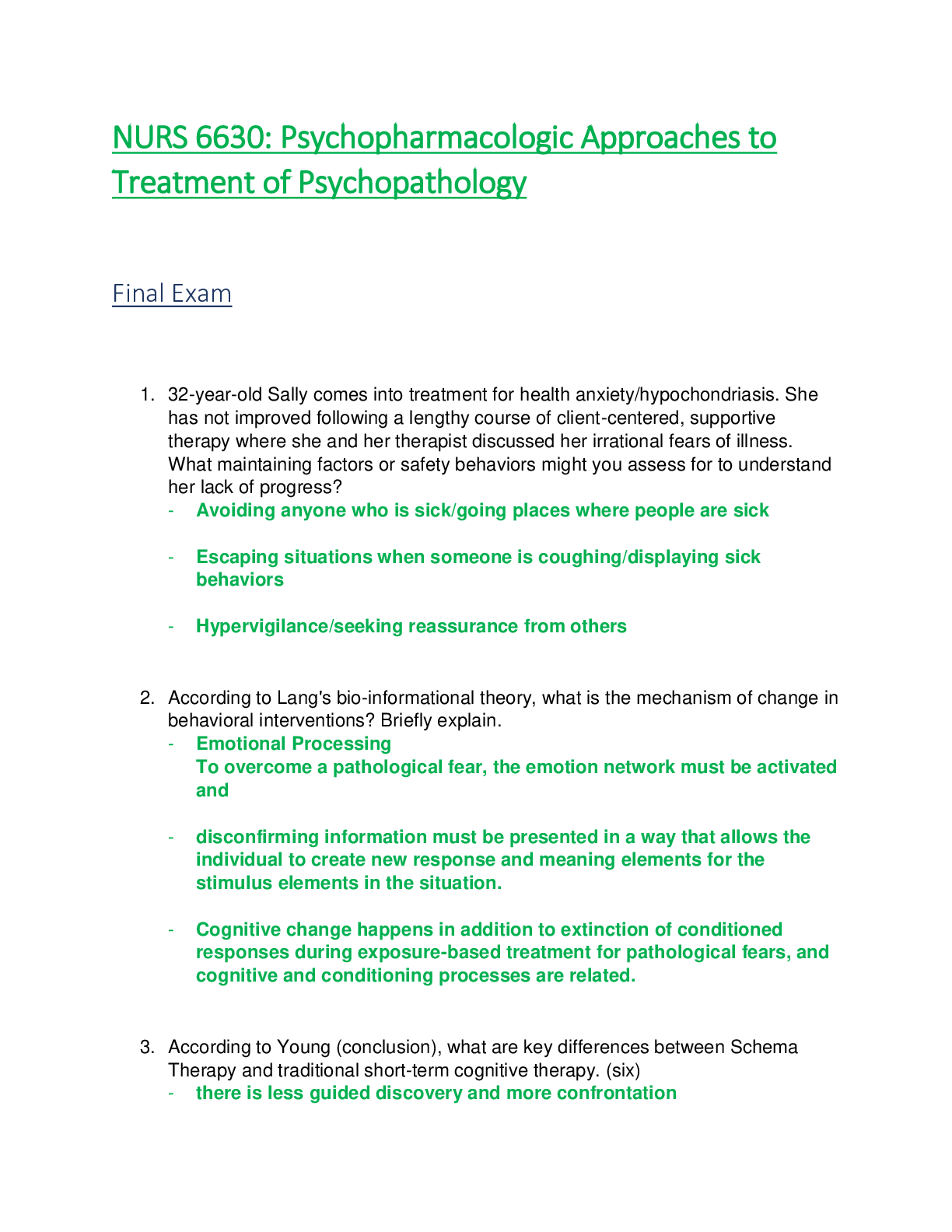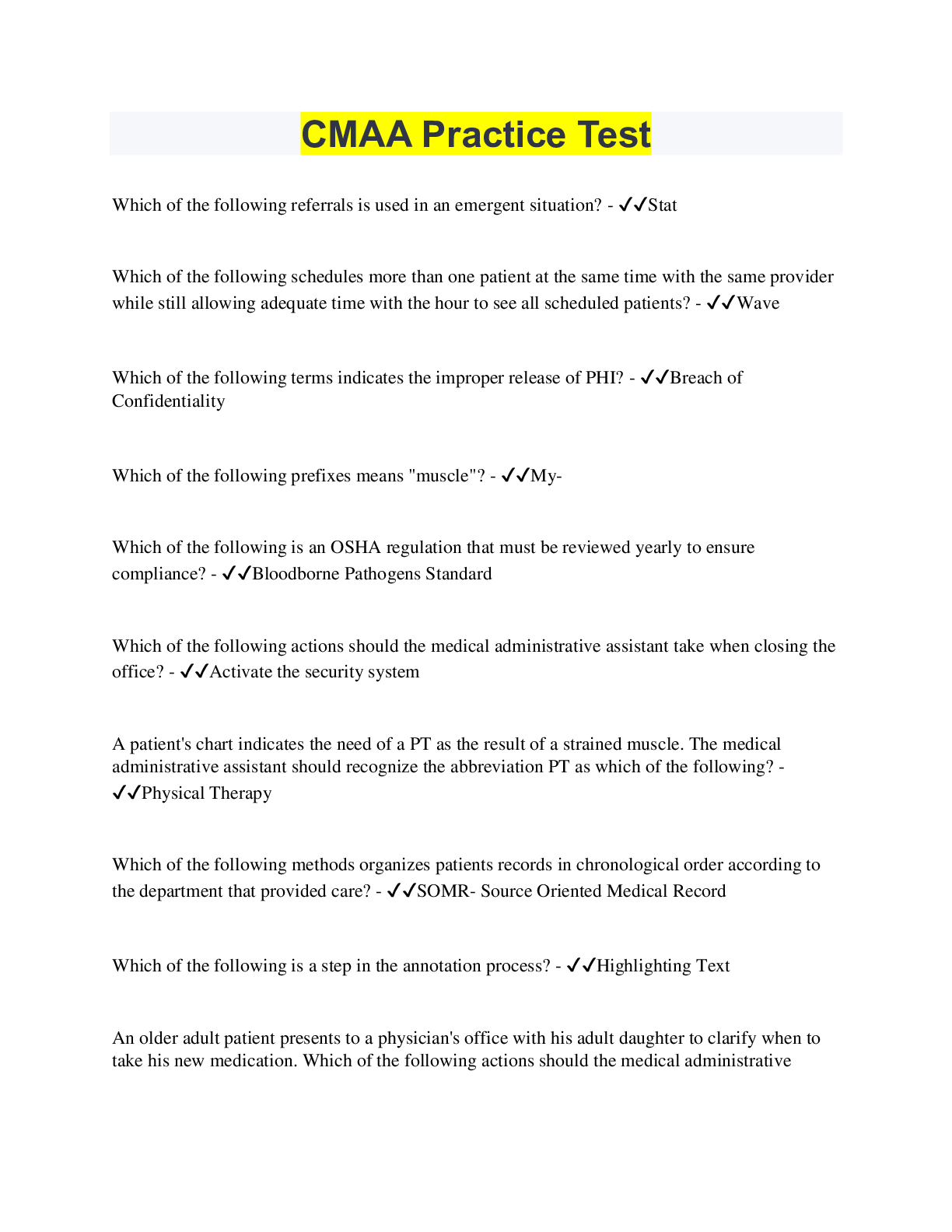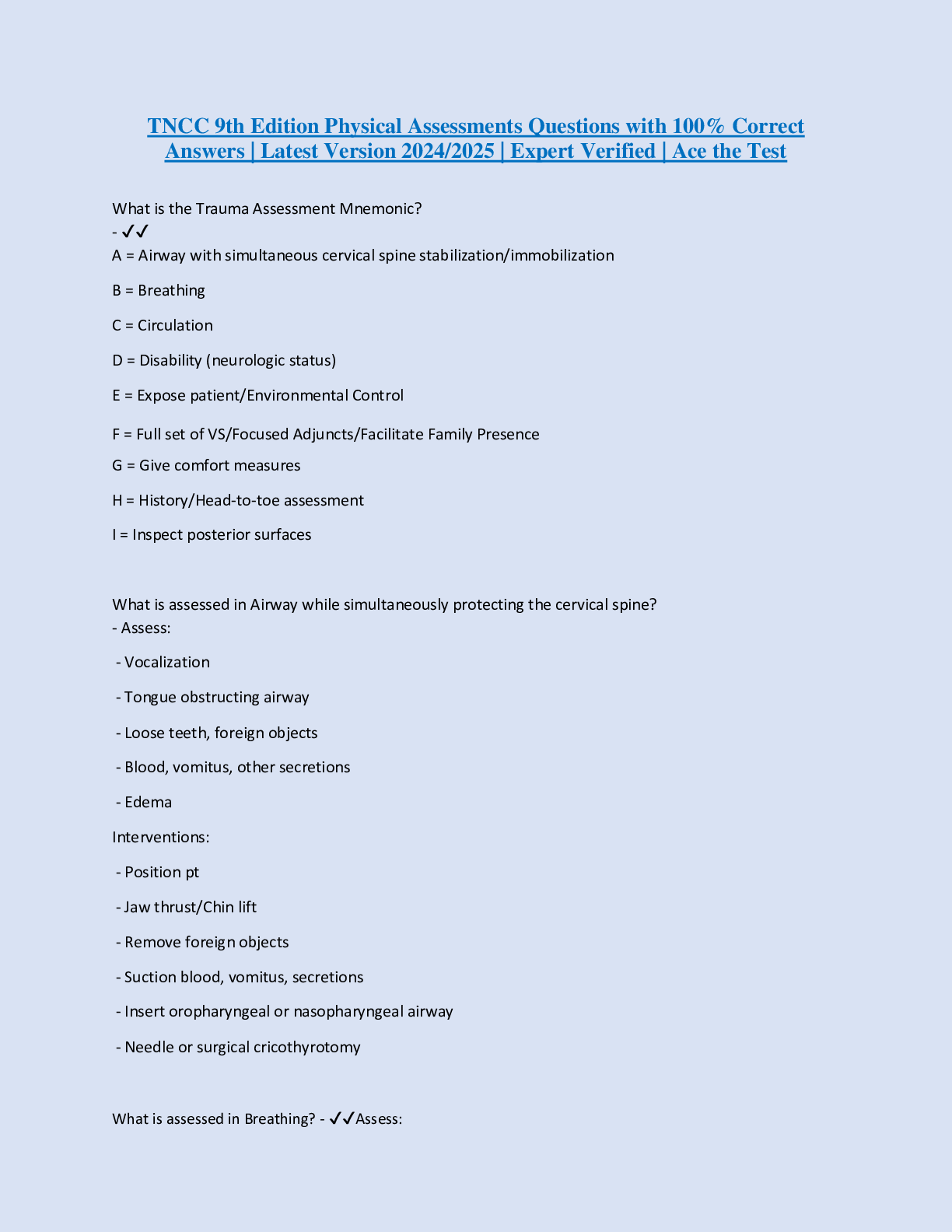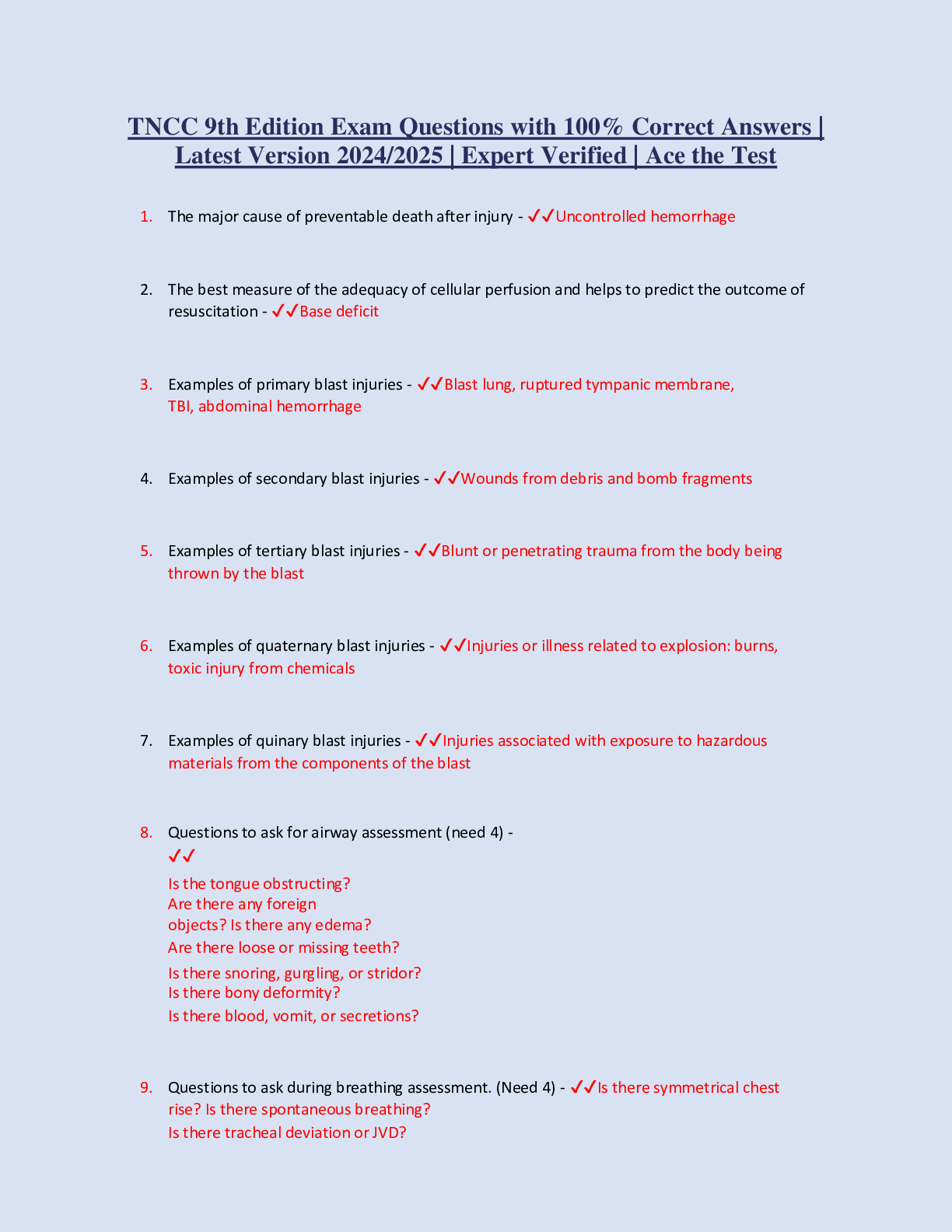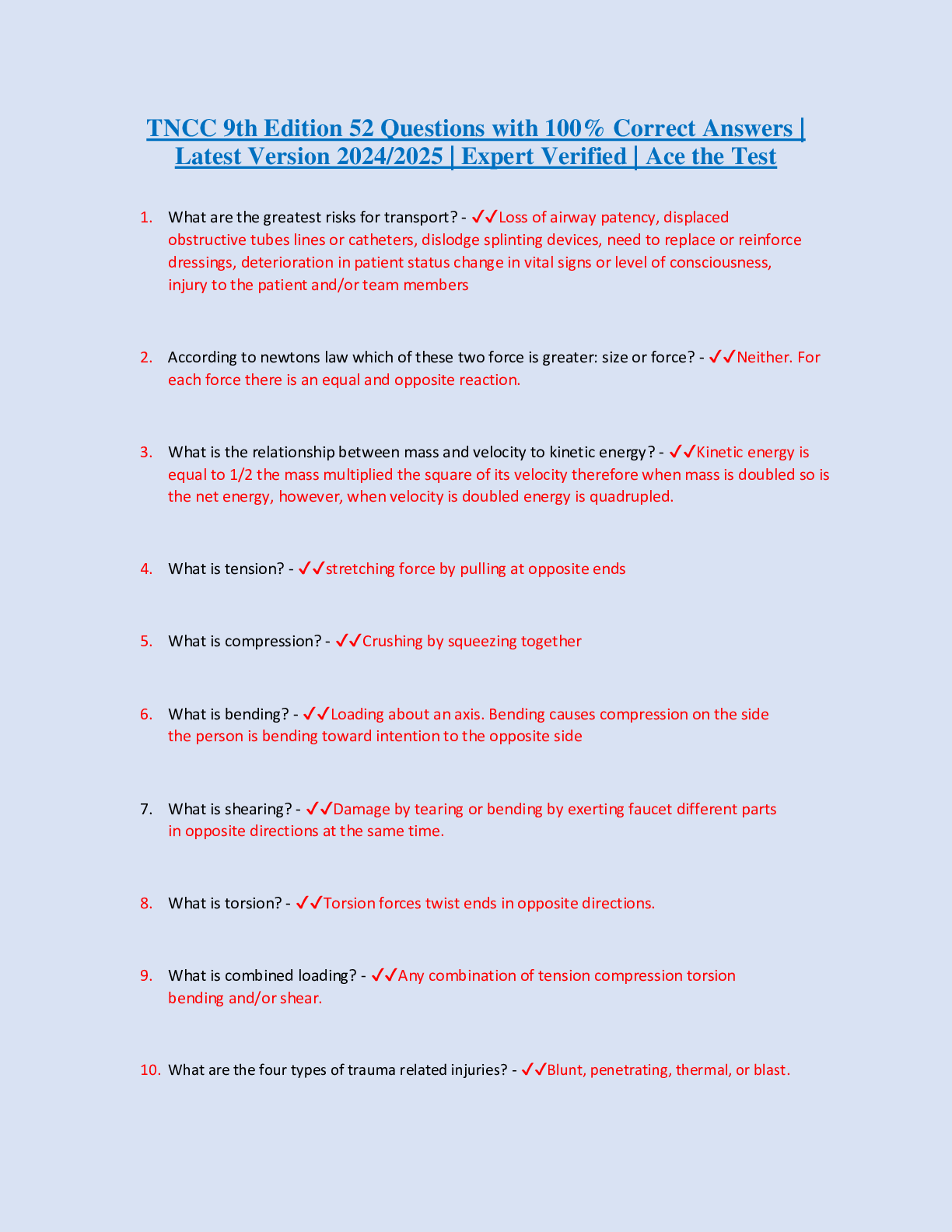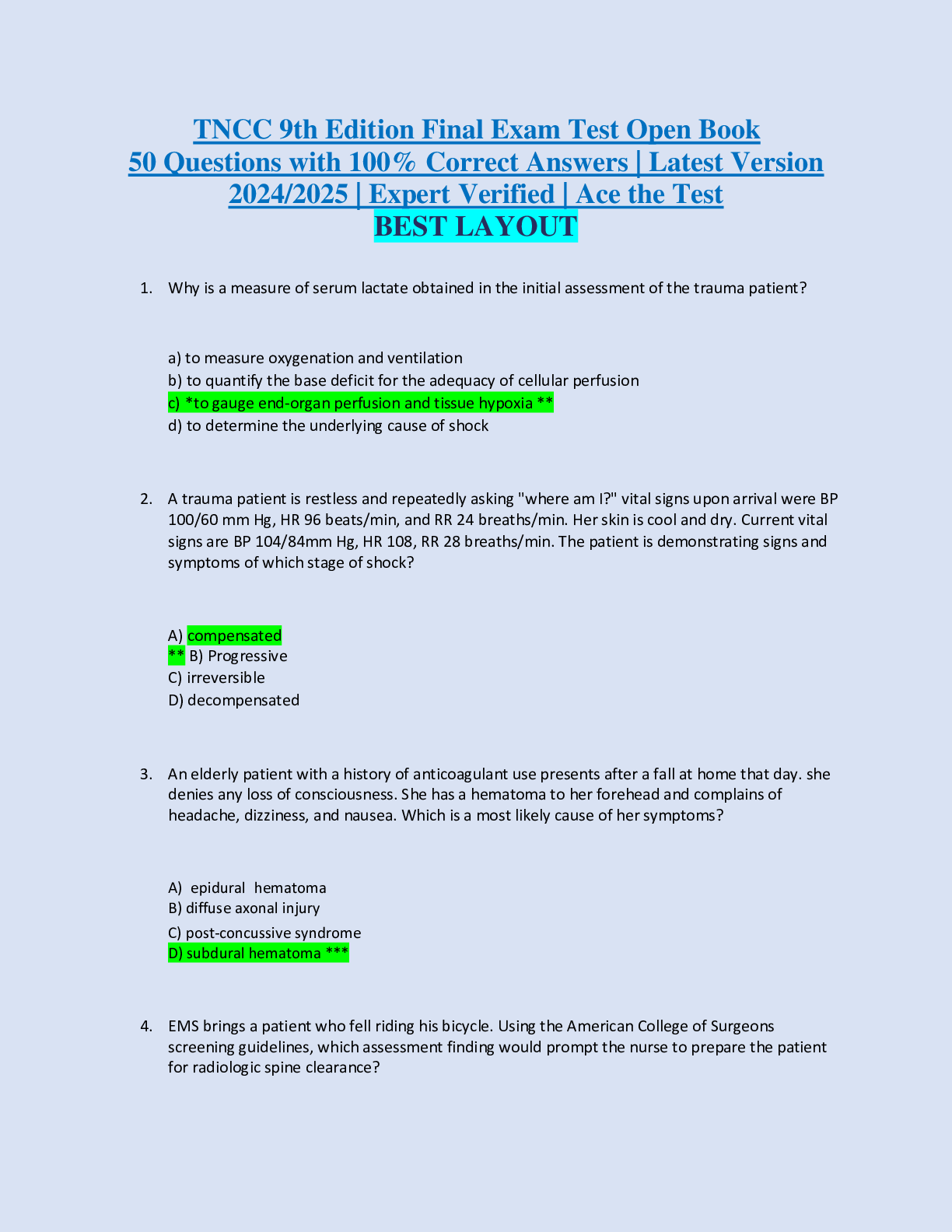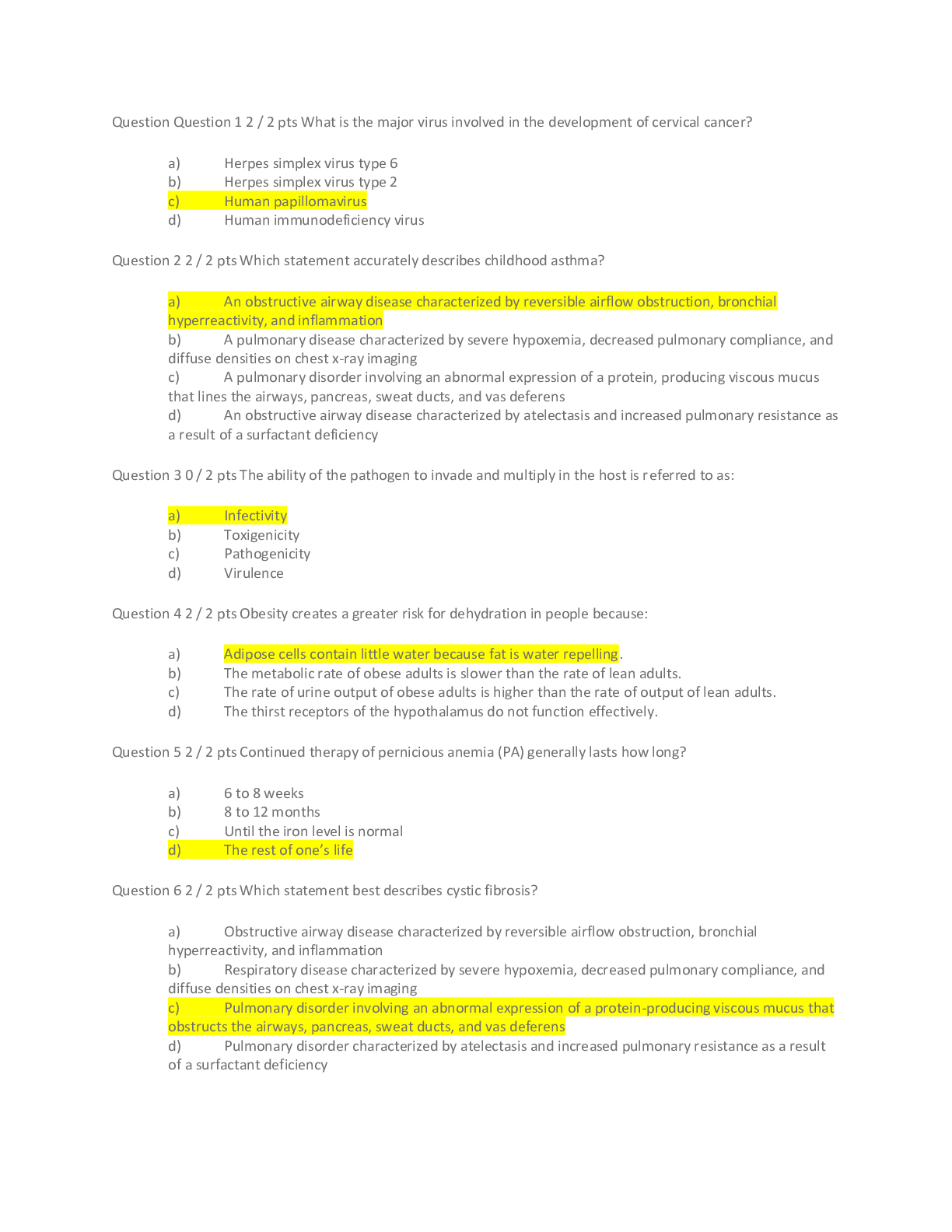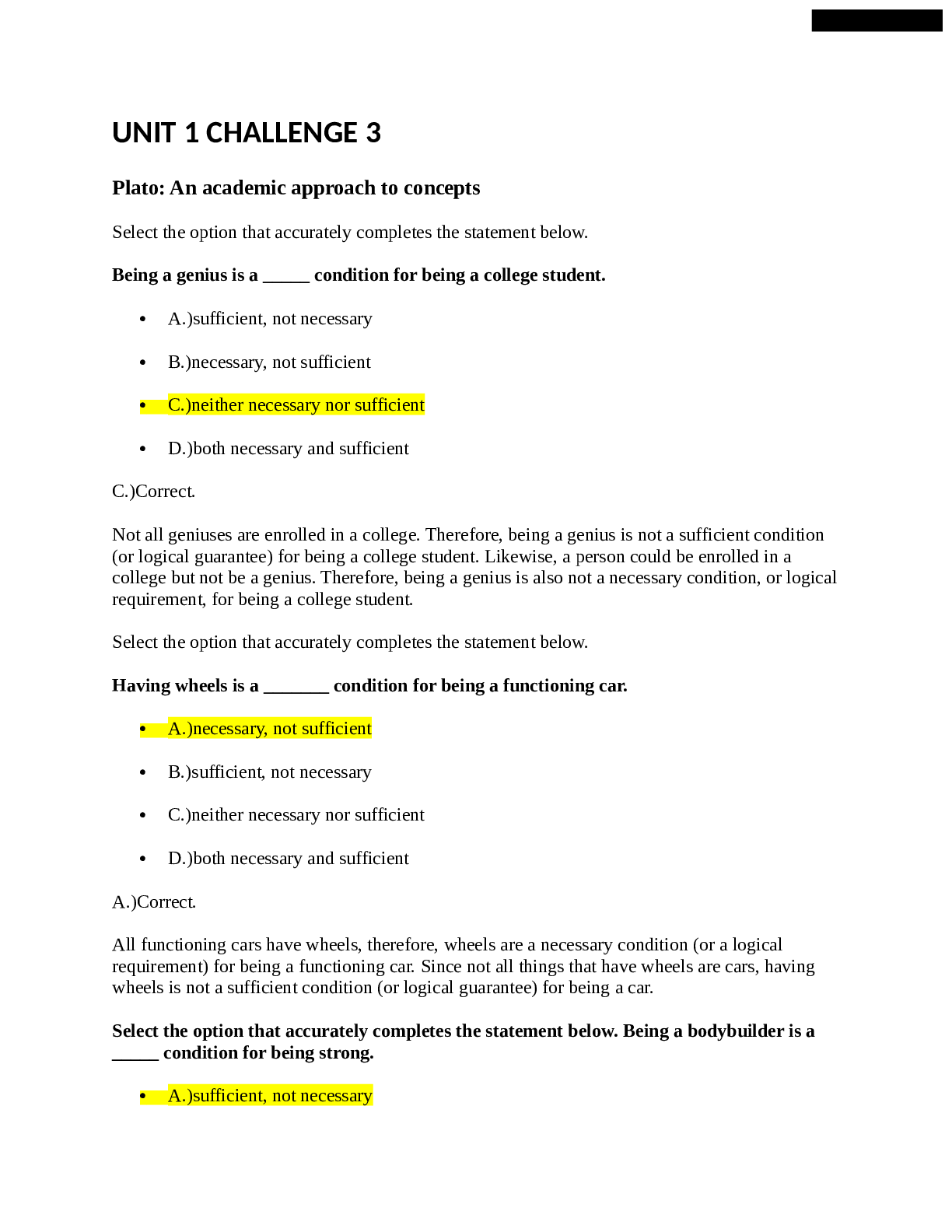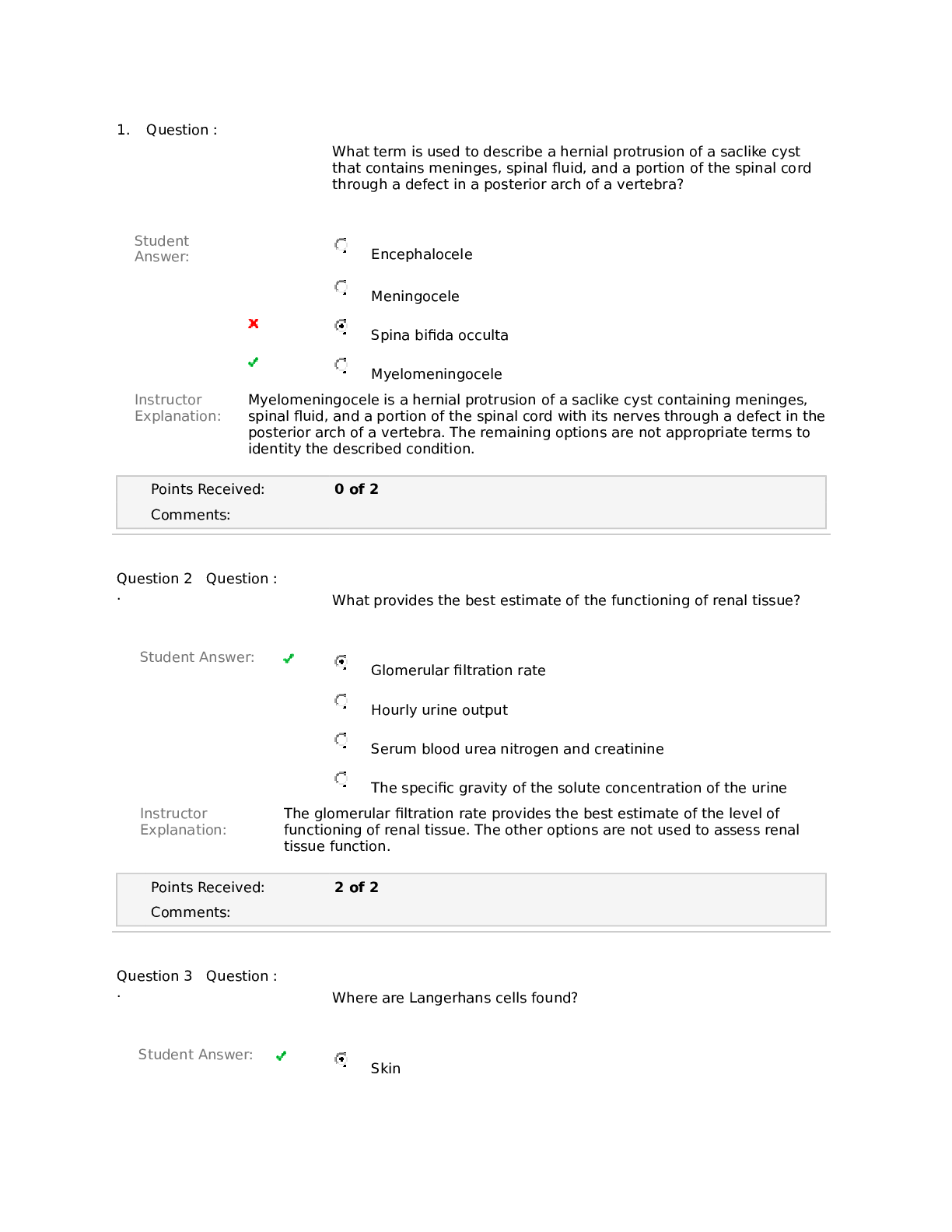Chemistry > EXAM > Exam > Columbia University CHEM UN2045 Organic Chemistry I CHEM UN2045 Exam 3 (All)
Exam > Columbia University CHEM UN2045 Organic Chemistry I CHEM UN2045 Exam 3
Document Content and Description Below
Organic Chemistry I CHEM UN2045 Exam 3 1 pt. Apply the One-Point Prompt sticker here. 1. 24 pts. Fill in the appropriate reactants, products, and reagents for the reactions below. 1) Na+... Ethane Acetylene 2a. 6 pts. Three cycloalkylhalides undergo a substitution reaction with potassium cyanide (KCN) and exhibit different rates of reactivity as shown below. In the space provided, draw the transition state structures. 2b. 6 pts. Note the trends of the relative rates of reaction. In the space below, explain why the rates of reaction change drastically. Be concise! KCN 3. 10 pts. Write a suitable mechanism for the reaction below. In the problems below, propose the synthesis of the given compounds from the noted starting material. Feel free to use any reagents. 4a. 6 pts. 4b. 10 pts. O Br OH A. Synthsize: from: B. Synthsize: from: Name: 6 pts. this pg. Using any alkyl halides containing only one carbon and acetylene (C2H2) as your only sources of carbon, propose the synthesis of the products below. You may use any reagents of your choice, even if they are composed of carbon (ex. mCPBA). 5a. 7 pts. 5b. 7 pts. Note: simply show the synthetic path to make one of the enantiomers. Name: 7 pts. this pg. 6a. 6 pts. Heating the chiral compound 1 in methanol yielded compound 2. In the space provided, provide a suitable mechanism for the formation of compound 2. In the box provided, write the type of mechanism involved: SN1, SN2, E1 or E2. 6b. 6 pts. For the reaction above, two other products are formed (diastereomers). In the boxes provided, draw one enantiomer of each diastereomer, and indicate the mechanism for the reaction: SN1, SN2, E1 or E2. 6c. 5 pts. Adding a base, as shown below, yields a different product. In the box provided, draw the product(s), and indicate the mechanism for the reaction: SN1, SN2, E1 or E2. 6d. 5 pts. Changing the reagents as noted, only one product is formed. Using dashes and wedges, draw the structure of the product, and indicate the mechanism for the reaction: SN1, SN2, E1 or E2. Br MeOH 1 2 Mechanism: Br MeOH 1 Mechanism: diastereomers (each as a pair of enantiomers, draw one enantiomer of each) C9H18O C9H18O Br MeOH 1 Mechanism: C8H14 NaOMe Br Acetone 1 Mechanism: C9H18S NaSMe [Show More]
Last updated: 1 year ago
Preview 1 out of 7 pages
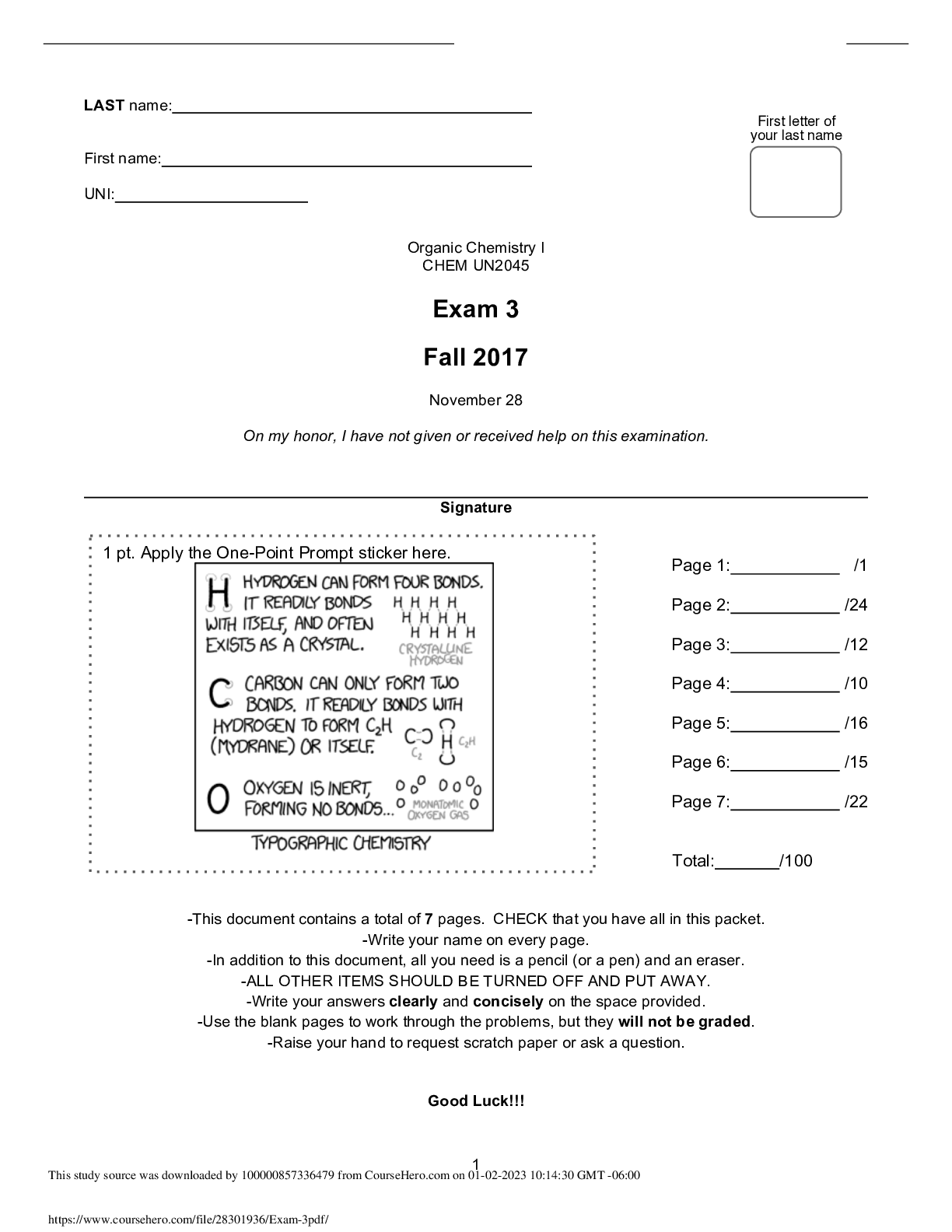
Reviews( 0 )
Document information
Connected school, study & course
About the document
Uploaded On
Jan 18, 2023
Number of pages
7
Written in
Additional information
This document has been written for:
Uploaded
Jan 18, 2023
Downloads
0
Views
32




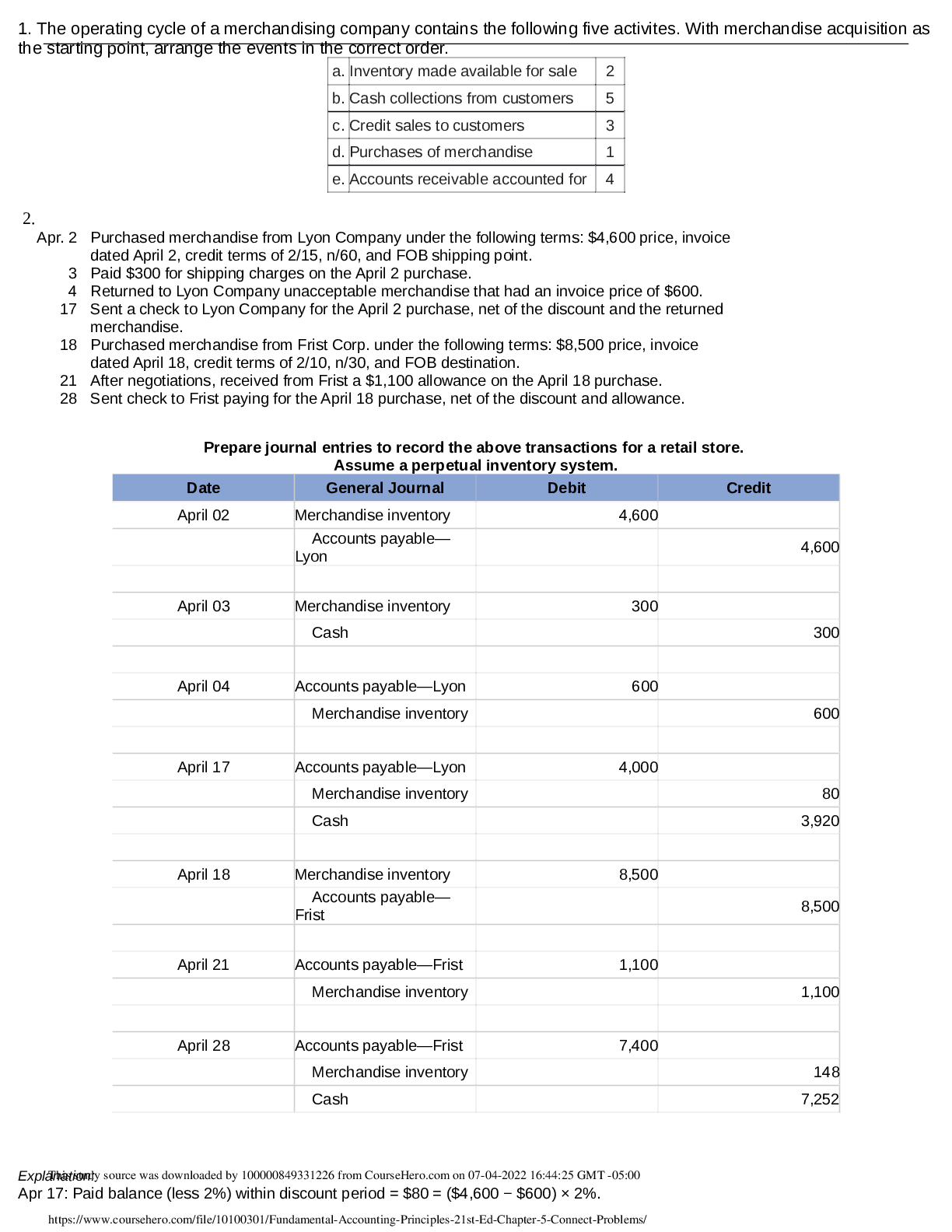
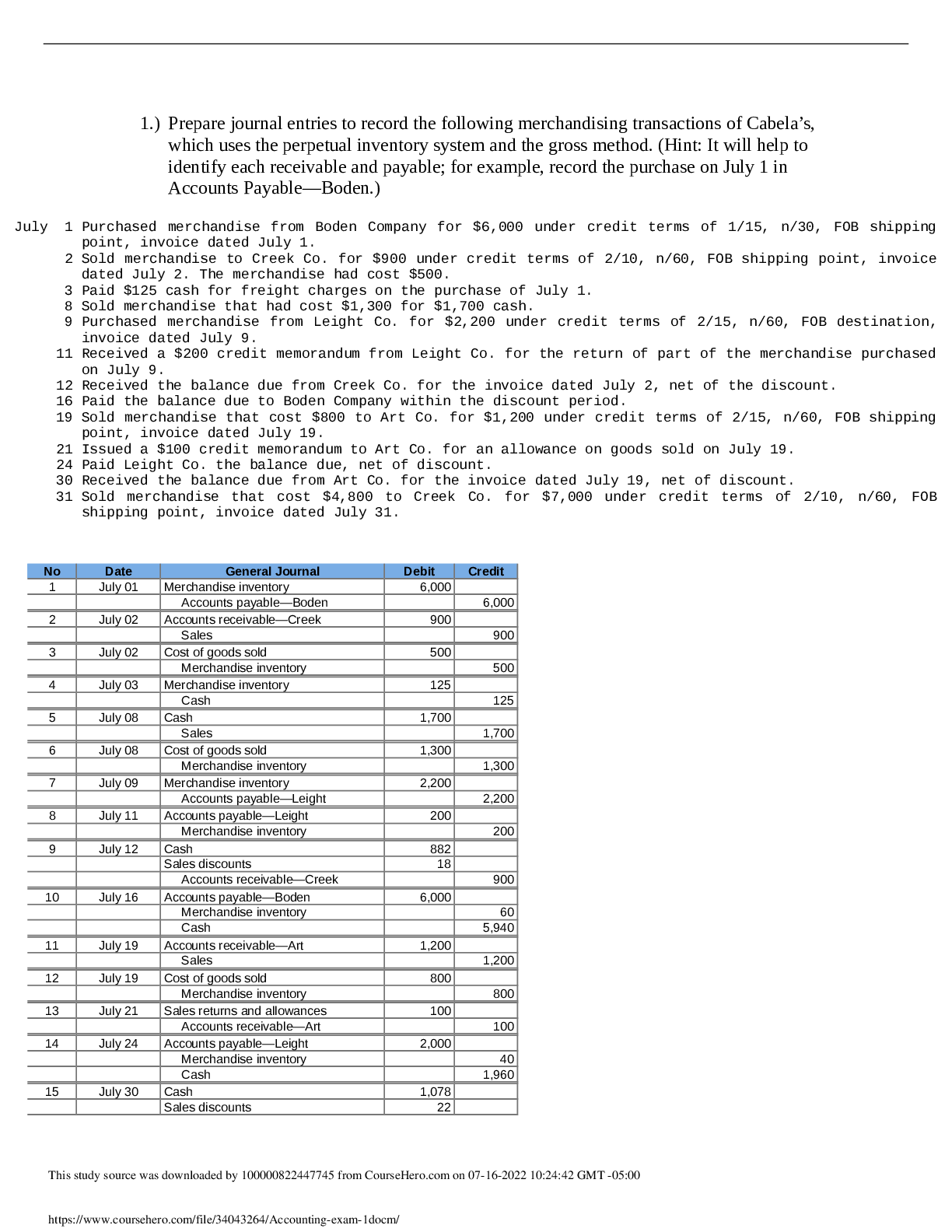
.png)
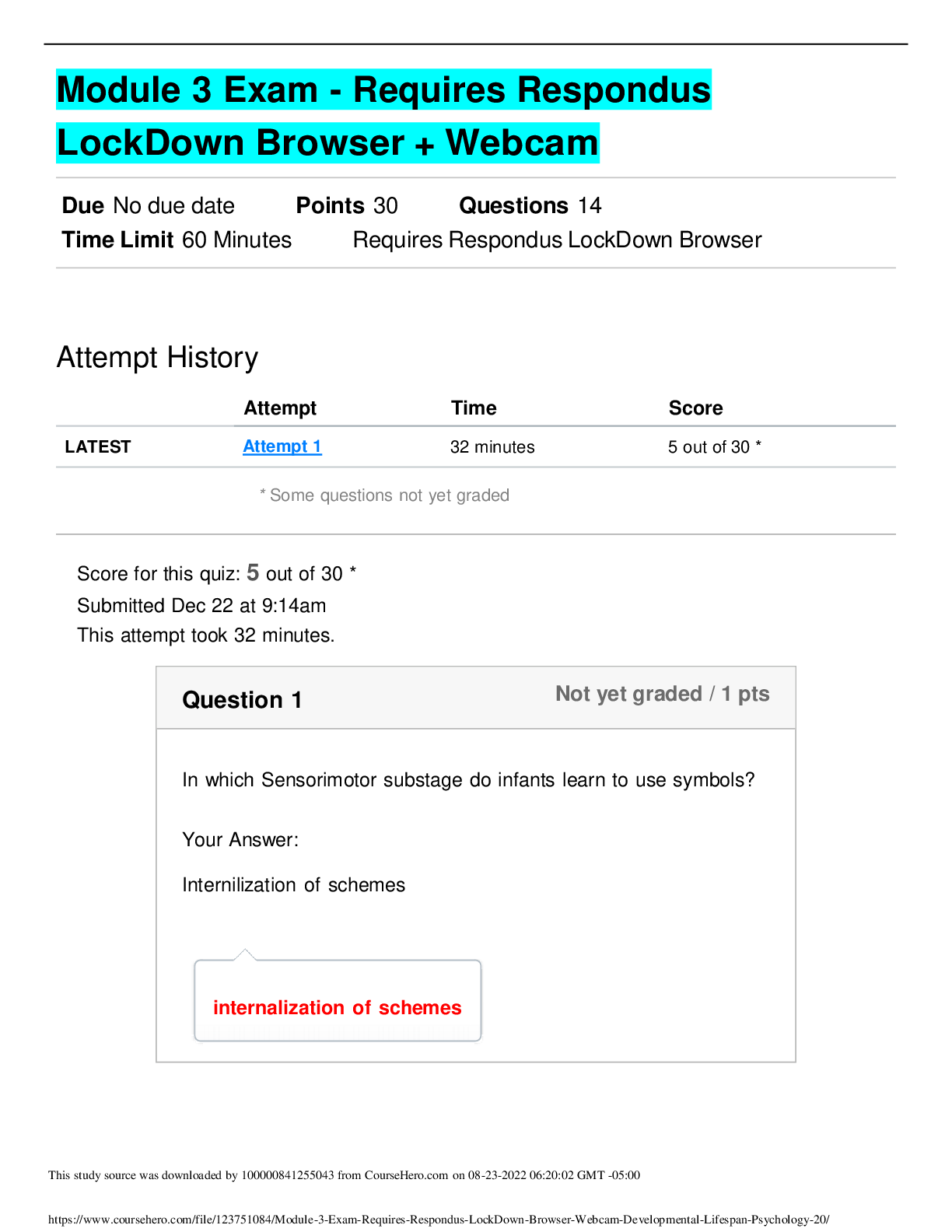


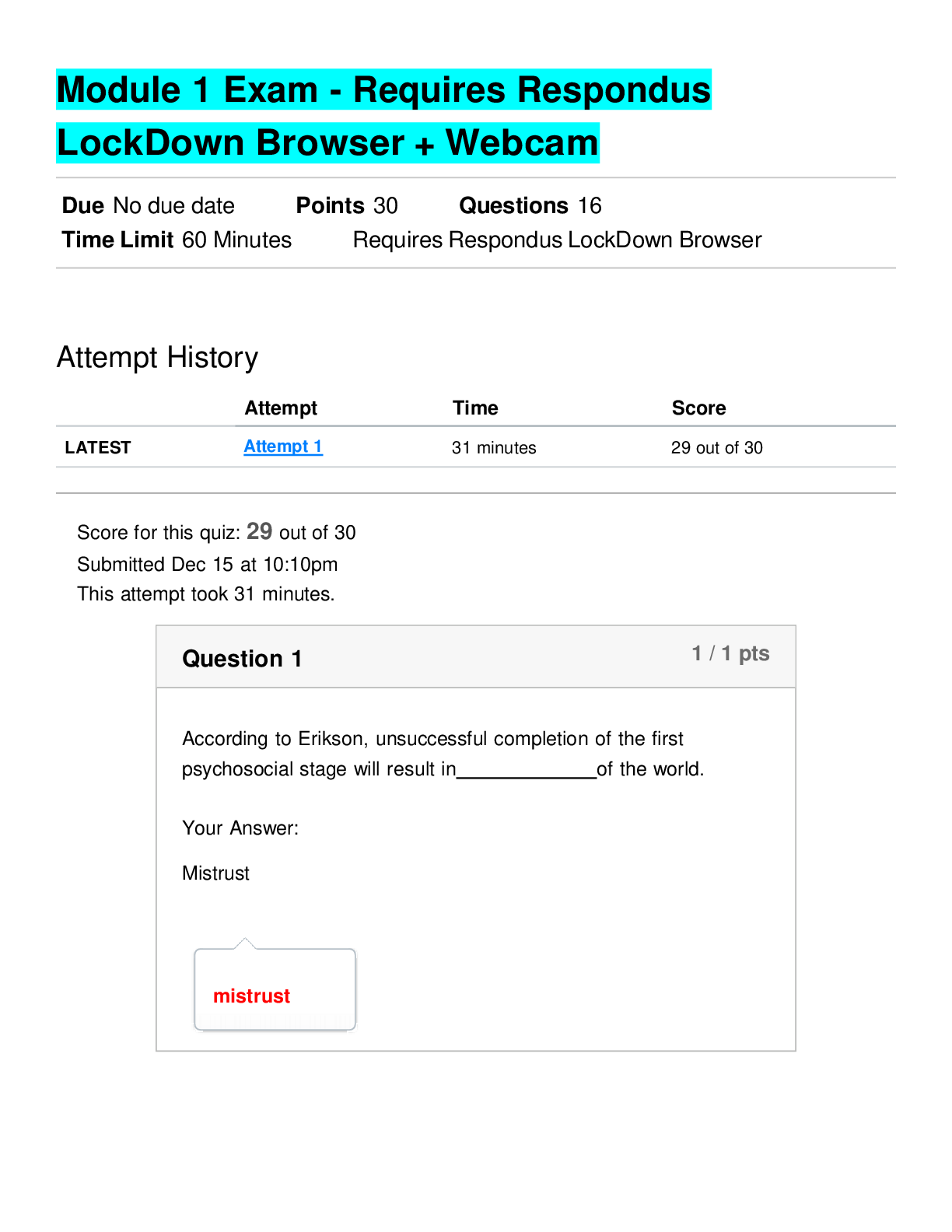

.png)
